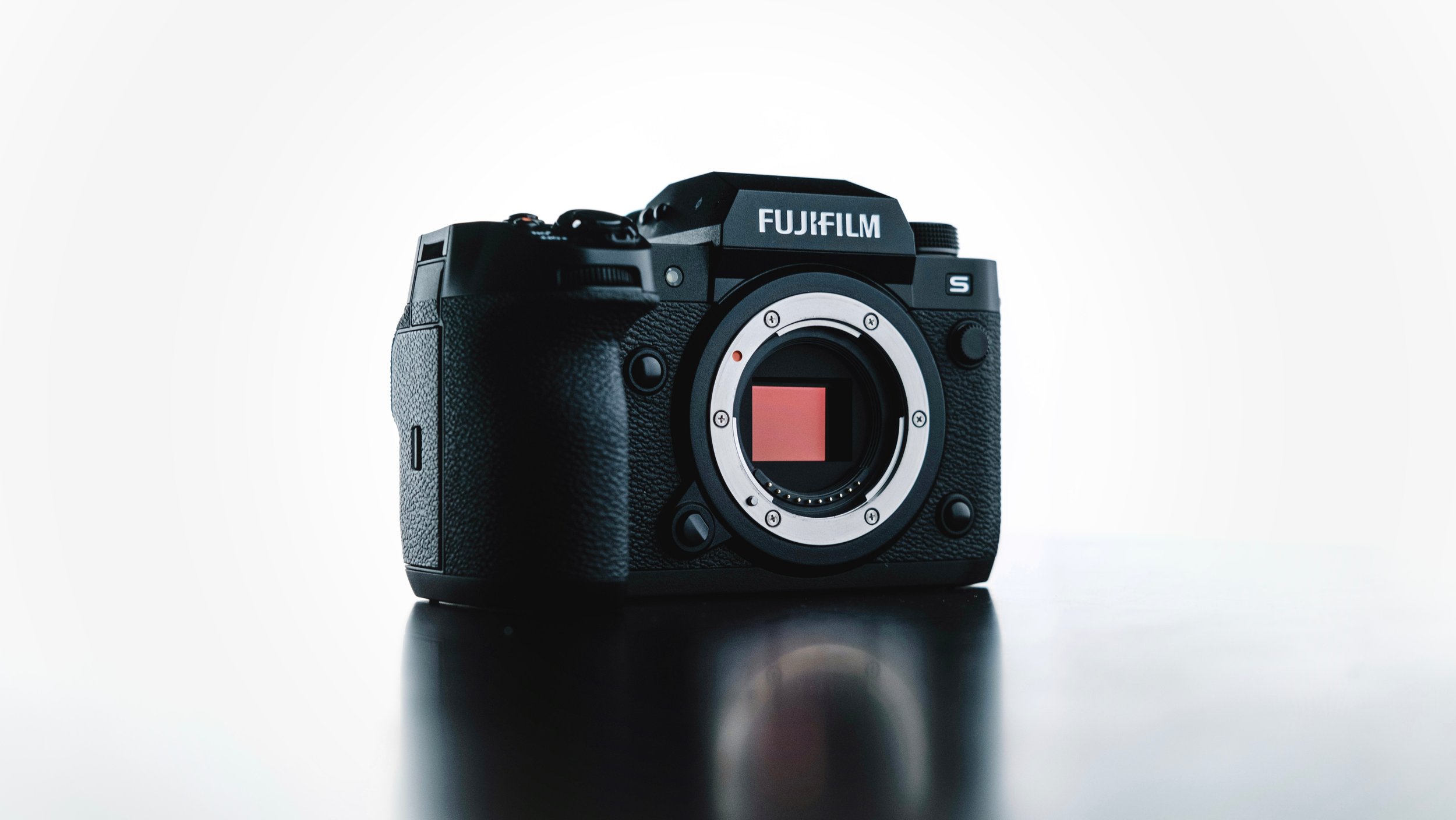Stacked and packed - Fujifilm X-H2S review
X-H2S is finally here
The fifth generation of Fujifilm cameras is finally here and it has arrived with a bang! I’ve had the privilege to try the newly announced X-H2S for roughly a week which, I do admit, isn’t a whole lot of time but I figured it might still be interesting for many of you who are interested in the camera. I carried it with me everywhere that week and photographed as much as I could. And yeah, I kind of liked it.
The original X-H1 has arrived at a strange time. The lifecycle of the third-gen of the X-Trans sensor and processor was nearing its end and the camera itself has been overshadowed by the X-T3 announced just months later. It offered a newer sensor and processor which gave it more AF points, a better AF algorithm, stronger video specs, faster framerate, slightly better low light performance and all of that for almost the same price. Getting the X-H1 didn’t really make a ton of sense with the X-T3 on the market. Well, Fujifilm isn’t making the same mistake again.
Because the X-H2S is spearheading the fifth generation of the X series camera lineup. It’s coming with the best and fastest specs Fujifilm can currently put into a camera and it isn’t holding back. Especially with the newly developed stacked sensor. Let me fill you in on why it matters.
Stacked sensor
Image sensors have a certain limit when it comes to their speed. They do not read the whole area at the same time but rather they scan from one side to the other. When you shoot with a mechanical shutter you don’t really notice this, but you are limited when it comes to the framerate depending on how fast the shutter can recycle. Last gen Fujifilm cameras could capture up to 11 fps of still using a mechanical shutter.
When you disregard the mechanical shutter though the camera can work much faster. The previous Fujifilm cameras could shoot up to 20 fps in electronic shutter (30 with a slight crop). Electronic shutter does have its downsides though. You see, scanning from one end to the other means that if you photograph someone moving very fast the top of their head is captured on the left side of the frame but their feet are on the other side by the time the scan line gets there. This results in a rather funny-looking askew image.
It’s even more obvious when you shoot under artificial lights. Fluorescents and LED flicker. Your eye can’t really see it, but your camera definitely can. And if the lights flicker whilst the image is being scanned you get some nasty stripes all across your image. Those are either nearly impossible or a real pain in the ass to remove. Stacked sensors however read the data considerably faster. They are not a total lifesaver in a crappy LED situation, but they do improve the situation by a large margin.
I did get a few light and dark stripes across the image when the scene was lit by really aggressively flickering cheap LEDs. At that point I switched back to mechanical shutter which wasn’t really an issue since the shutter has been reworked. The sound is quiet, dampened and unobtrusive.
AF and IQ
A faster sensor readout rate combined with a more powerful processor means first of all a framerate of 40 images per second in full quality with no viewfinder blackout. The other benefit is the camera’s ability to calculate the exposure, tracking data and the autofocus up to 120 times per second. The autofocus has improved dramatically. I was even able to track a moving subject using my old slow XF 56 f/1.2 R lens with which I was never able to track anything up until now.
The camera can now comfortably recognise and track not just the faces and eyes of people, but also animals and birds. It can lock onto cars, bikes, planes and other vehicles. Whatever object you lock onto in the tracking focus mode it will hold onto and keep it sharp. It does make things a lot easier.
The image quality itself hasn’t improved much from the last generation but I wouldn’t really take that as a downside. Fujifilm cameras have always taken beautiful images which I’ve often printed up to A2 or even larger sizes with no issues whatsoever. The same goes for ISO performance. A slight improvement can be seen, but it’s nothing major. I’m the last person to ask about high ISO noise performance though. I set my camera to choose its own ISO regardless of the noise as I do not care how much of it I get.
In terms of film simulations, we’re not getting anything we haven’t seen before. The only new one is Nostalgic Negative but we’ve already seen that one in the GFX lineup of cameras. Unfortunately, I only had the pre-production unit so I couldn't work with any of the raw files, but the camera offers in-body conversion to a 16-bit Tiff with a selected film simulation baked in so the demo images at the bottom of this article are processed from those.
Body
The large and deep grip is back from the X-H1 days. What’s new however is the lack of analogue dials dedicated to ISO, shutter speed and exposure compensation. All of that is now controlled using the usual DSLR-style wheels on the front and the back of the body. The only large dial on the body is the PSAM dial offering quick access to 7 custom profiles.
Those can be customised from shooting modes, through film simulations to AF modes and anything else that affects your image. It is a quick and easy way to switch between multiple different kinds of photography types without constantly having to dive into the menus.
The customisable sub-monitor is back which offers an array of different options of what to display once the camera is on. Once you turn the camera off it will show you the remaining space on your cards in terms of frames or video minutes remaining and your battery life. Surely a useful feature to avoid travelling somewhere far only to realise you forgot your cards or battery. A quick glance on top of the camera tells you all you need to know.
Coming from the X-T4 debut X-H2S now has a fully swivelling and articulating screen. Personally, I preferred the three-way til of the X-T2 and 3, but I guess this type of screen is a sign of the times that is not really going anywhere anytime soon. I’m sure filmmakers will appreciate the screen.
The viewfinder has received a major improvement. Fujifilm has increased the resolution by roughly 2 million pixels as well as increased the refresh rate. You can now set the viewfinder to run at either 60, 120 or even 240 frames per second. It is a gorgeous viewfinder to look through especially at the two higher framerates. I kept it at 120 fps due to the 240 fps mode needing to dim the screen slightly, but not by a whole lot.
Last but not least is the redesigned joystick. It finally feels like a proper joystick and not a sharp bit of plastic stuck into the body. However, it is a bit too high up and too far left for my taste (nothing to do with the joystick’s political affiliations).
Ports
Connectivity has received a major improvement. All of the ports on the left side of the body are now individually covered with hinged sealed doors. The 3,5 mm microphone jack sits a little higher up so when you’re filming yourself with the screen swivelled forward the mic jack doesn’t interfere with the display.
A 3,5 mm headphone output is right below the mic input. The bottom door holds a USB-C port with threads around it so you can install a provided accessory preventing you from accidentally ripping it out. The USB-C port not just charges the camera, but also offers power delivery for longer recording sessions.
Last but definitely not least is the full-sized HDMI port. No mini, no micro. A full HDMI 2.1. Take notes, Canon.
The card situation had to be improved considering the speed at which the camera shoots and considering the video features which I’ll mention shortly. UHS-II cards are just not fast enough for some people so Fujifilm has opted for a combination of a UHS-II SD card slot and a CF Express type-B slot capable of roughly 1700 MB/s speeds.
Video
Fujifilm went all out when it comes to video. X-H2S can record 4K uncropped video in 10-bit All-Intra 4:2:2 internally up to 60 fps. If that’s not enough for you and you’ve got a CF Express card, you can record Apple ProRes internally. If you don’t mind a slight crop, you can record 4K up to 120 fps in the dedicated high-speed mode. This mode also allows for 1080p recording up to 240 fps.
For the anamorphic users out there the camera can now utilise open gate recording using the entire 3:2 area of the sensor at 6.2K at 30 fps.
When it comes to video it’s almost a tradition to talk about overheating nowadays. Not this time. When I recorded 4K at 60 fps I killed the battery in roughly 90 minutes without any heat warning. That has only happened when I recorded the same resolution at 120 fps roughly an hour into the recording. Honestly, I have yet to meet a person who records those kinds of framerates for this long but if they exist Fujifilm has got a solution. The back of the body comes with two threads and a patch of connectors made to attach a small actively cooling fan making the recording times pretty much unlimited.
Am I going to buy one?
The Fujifilm X-H2S is a beast! A great camera with a plethora of helpful and necessary features. It handles really well, it’s a joy to compose and shoot with and covers pretty much anything you need it to do. For my needs, my X-Pro3 does more than enough though. I’m not going to get the X-H2S just yet. I’m more curious about the upcoming X-T5 or if we’re lucky the X-Pro4.
If I were a filmmaker or a sports/wildlife shooter this would be a certain choice. A great start to a new Fujifilm chapter. Let’s see if they can keep the momentum going.
I don’t have the camera on me anymore. It had to go back to Fujifilm, but if you’ve got any questions I haven’t covered here, just ask away.




















